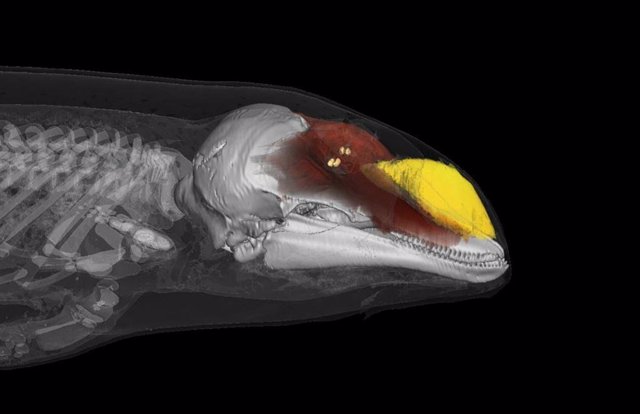March 3 () –
Dolphins and other toothed whales have developed an air-driven nasal sound source that works in different vocal registers, like the human voice. They use it to hunt deep.
The find, published in Science magazineis the result of research led by Professor Coen Elemans, a voice scientist at the Department of Biology at the University of Southern Denmark, and Professor Peter Madsen, a whale biologist at the Department of Biology at Aarhus University (Denmark). .
The study shows that toothed whales, like humans, have at least three registers of voice: the fingerling vocal register (also known as glottalization or broken voice, which produces the lowest tones), the chest register (which is our normal speaking voice) and the falsetto register (which produces even higher frequencies).
Vocal falsetto is a normal voice register often used in American English. Kim Kardashian, Katy Perry and Scarlett Johannson are well known for using this register, says Professor Elemans.
According to new research, toothed whales use this broken voice register, called in English ‘vocal fry’, to produce their echolocation calls to capture prey.
When they use this modality, the vocal cords are open for a very short time, so very little respiratory air is needed to use this register, adds Elemans.
And this economy of air makes it especially suitable for echolocation. During deep dives, all the air is compressed to a tiny fraction of the volume at the surface.
Toothed whales dive up to 2,000 meters deep and they catch more fish than the human fishing industry. When they hunt in deep, murky water, they produce ultrasonic echolocation clicks, short and powerful, at speeds of up to 700 per second, to locate, track and capture their prey.
Thus, the broken voice record allows whales to access the richest food niches on Earth: the ocean depths, says Madsen. it’s a statement.
Although this vocal modality can be controversial in humans and seen as anything from annoying to overbearing, it has certainly made toothed whales an evolutionary success, Elemans adds.









![[Img #74692]](https://thelatestnews.world/wp-content/uploads/2024/12/What-do-11-and-12-year-old-boys-and-girls-300x200.jpg)
